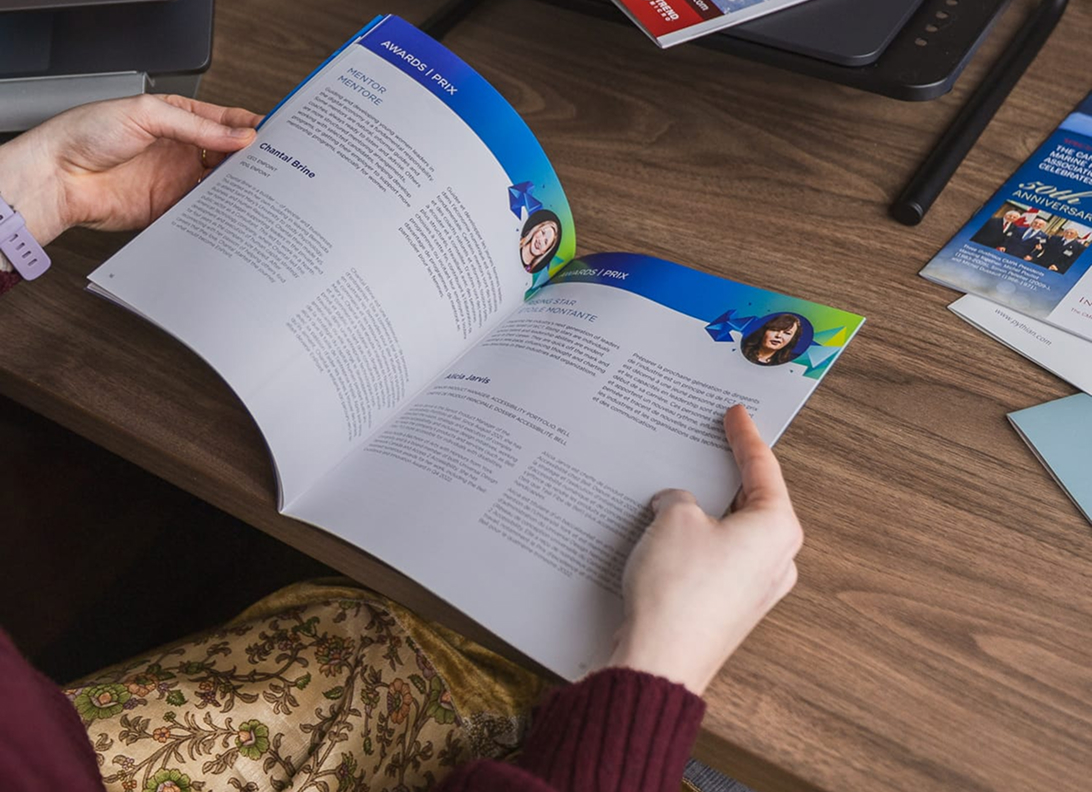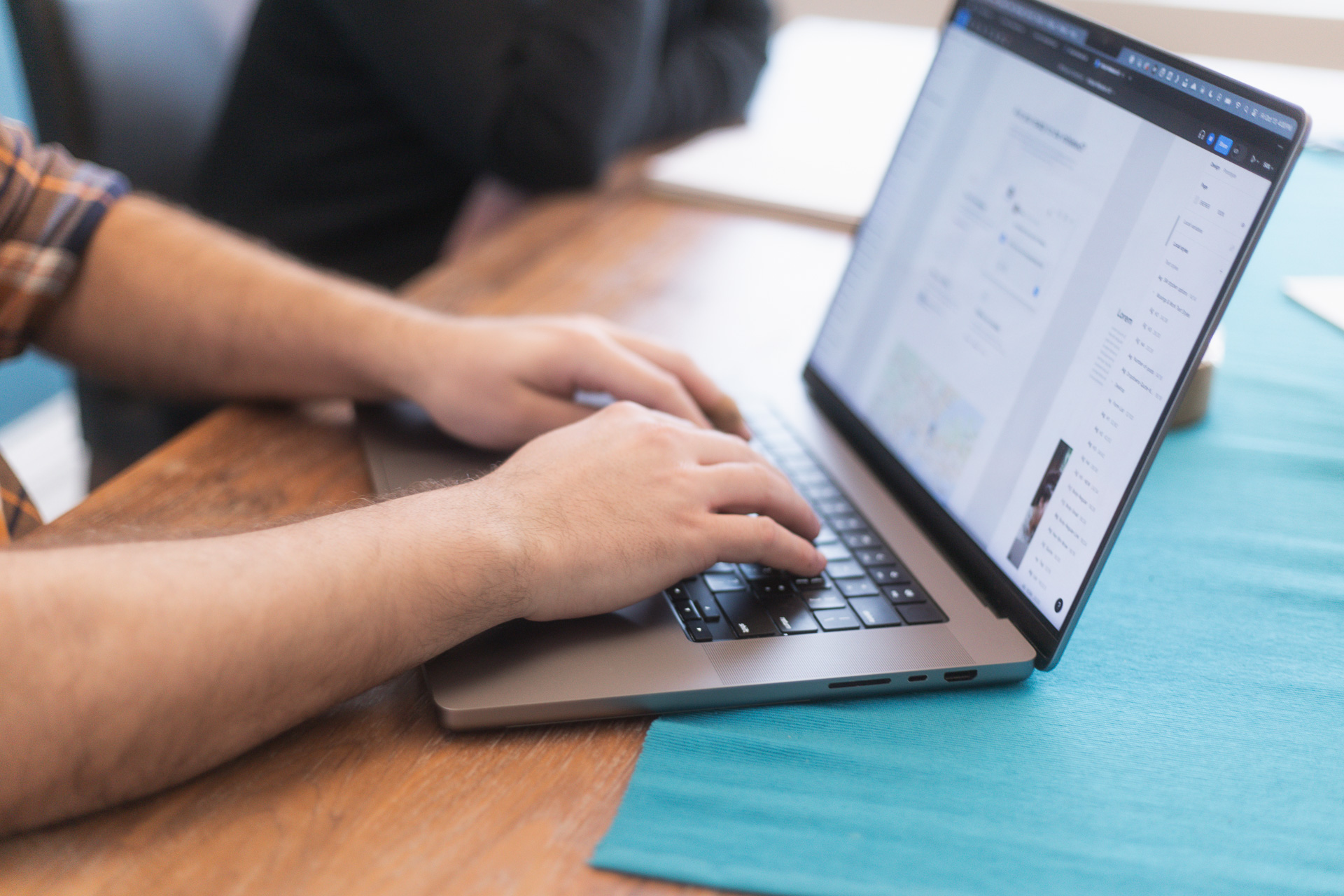Green pixels: The new frontier of sustainable design
-
Date Posted
2025-04-15
-
Tags
-
Written By
Ah, Earth Day. A time to reflect on our environmental footprint, hug a tree (or at least think about it), and debate whether oat milk is truly saving the planet. For us graphic designers, it used to be pretty straightforward—choose FSC-certified paper, use soy-based inks, print only when necessary. Simple, right? But here we are in 2025, where most clients have gone digital, paper stocks are practically vintage, and AI has joined the design team (whether we like it or not).
So, where does that leave sustainability for designers? Turns out, those sleek digital solutions aren’t as green as they seem. Cloud storage? Energy-hungry. AI-generated content? A power guzzler. Our pixels might be paperless, but they’re not guiltless. Before you panic-Google “eco-friendly AI,” let’s dig into how we can still be responsible designers in this new era—without ditching the tech or donning hemp-based everything.
AI: A cautious plus-one at the design party
Look, we get it—AI can be handy. Need a headline that doesn’t sound like it was written by a sleep-deprived intern? AI’s got you. But at Initiate, we’re a bit like that friend who scans the ingredient list on everything before putting it in the cart. We use AI sparingly and thoughtfully, unlike those low-cost, high-output agencies that seem to have outsourced their creative souls to robots.
The catch? AI’s energy consumption isn’t just a footnote—it’s a headline. Training a single AI model can generate as much carbon as five cars over their lifetimes. All that computational power needs a lot of juice, and we’re not talking cold-pressed green. That’s why we’re picky about when and how we use it. If we can sketch it, code it, or strategize it without the bots, we do.


File bloat: The secret polluter
We’ve all been there—saving that 300 DPI, print-quality PDF for a project that’s destined for Instagram stories. Those oversized files don’t just hog drive space—they also require more energy to store, transfer, and process. Think of it like hoarding plastic bags; just because they’re out of sight doesn’t mean they’re not causing a problem.
Every kilobyte adds up when stored on data centers that guzzle energy like they’re prepping for a blackout. As designers, it’s on us to optimize files, streamline storage, and remember that just because we’re not printing forests doesn’t mean our work isn’t leaving a mark.
Remote work: the accidental eco-hero
If there was one silver lining to the pandemic (besides the rise [pardon the pun] of sourdough), it was the massive drop in pollution thanks to remote work. As office lights dimmed and traffic jams cleared, we tasted what less commuting can do for the planet. Turns out, swapping cubicles for couches wasn’t just about cozy pants—it was also about slashing carbon emissions.
At Initiate, remote work is part of the new normal, cutting down on daily commutes and the energy demands of keeping an office lit and running. Even small habits—like avoiding unnecessary video calls—can help curb the environmental impact. Because let’s be honest, most of those meetings really could’ve been an email.
The office hustle: small acts, big impact
While we’re on the subject of energy, let’s not forget the IRL stuff. At Initiate, we compost, recycle, and print only when necessary—basically everything short of installing a wind turbine by the coffee machine. Those small habits may seem like drops in the ocean, but when combined with mindful digital practices, they actually add up.
From cutting off power to devices at night to using LED lighting and EnergyStar equipment, we’re committed to reducing waste, both digital and physical. Because sustainability isn’t about doing one thing perfectly—it’s about doing a lot of things a little better.
Sustainable tips for designers in 2025 🌱
- Optimize Your Files: Compress and archive old projects, use energy-efficient hosting services, and choose web-friendly formats whenever possible. If it doesn’t spark joy (or a current project), let it go.
- Be AI-Smart, Not AI-Crazy: Use AI sparingly and only when it genuinely streamlines your workflow without draining power unnecessarily. Think of it as hot sauce—great for a kick but overwhelming in excess.
- Go Dark (Mode): Switching to dark mode on your devices isn’t just a win for your eyes—it also saves a bit of energy. Same goes for disabling video on calls that really don’t need it.
- Work Remote, Travel Less: Embrace remote work to reduce the environmental impact of commutes and office energy demands. And yes, count every Zoom meeting that could’ve been an email as a win for the planet.
- Rethink Storage: Data centers are the new factories—energy-hungry and ever-growing. Keep your cloud footprint light by deleting redundant files and archiving responsibly.
- Digital Detox: Consider a “No-Upload” day each month where you work with existing files and avoid uploads, downloads, or unnecessary cloud interactions. It’s like Meatless Mondays, but for your server.
Our Earth Day call to action: Design smarter, not harder
Sustainability in 2025 isn’t about choosing between print and digital—it’s about being smarter with both. So this Earth Day, let’s skip the guilt trip and focus on making practical, thoughtful choices that add up—no hemp wardrobe required.
Because if we’re going to save the planet, we might as well do it in style. Insert jazz hands here.



